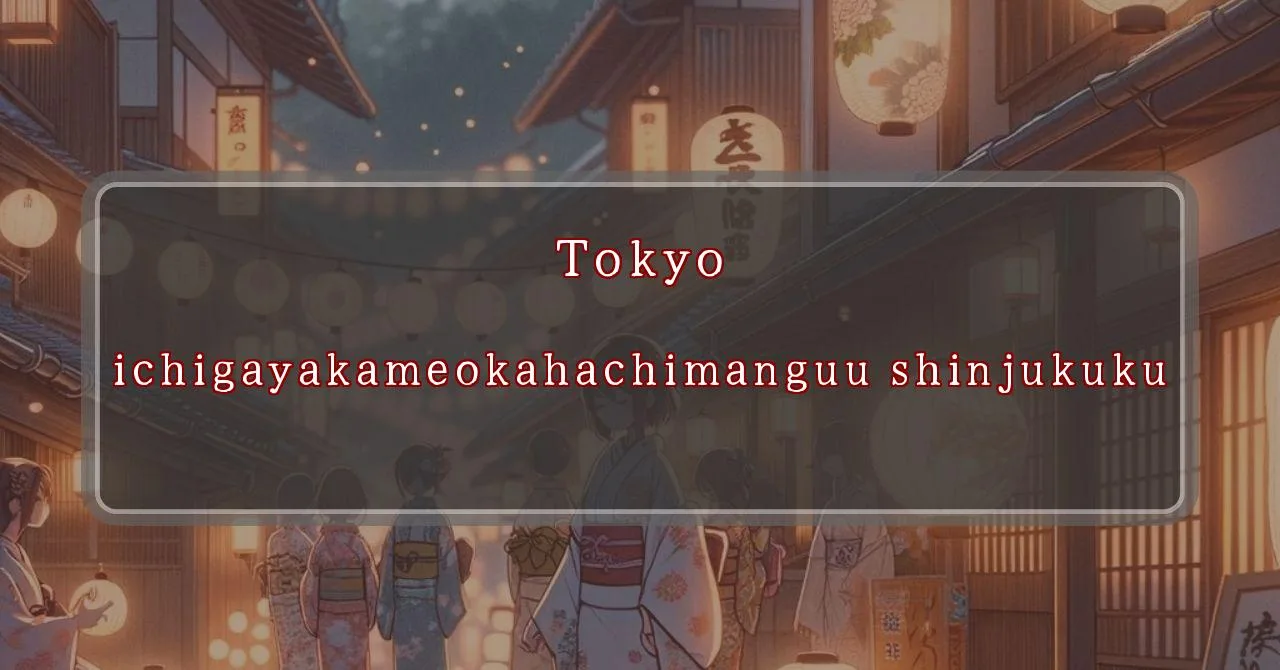Gleaming lights, divine blessings
Shrine is a Shinto shrine located in Ichigaya Hachimancho, Shinjuku-ku, Tokyo, Japan.
- Address: 15 Ichigaya Hachimancho, Shinjuku-ku, Tokyo 162-0844, Japan
- Phone Number: 03-3260-1868
- Access: 6-minute walk from Ichigaya Station on the JR Chuo Line, Sobu Line, Tokyo Metro南北線, and Yurakucho Line
- Festival Days: August 7th (Thu) – August 9th (Sat), 2024
Main Events and Attractions of the Festival
The Ichigaya Kameoka Hachimangu Shrine Festival is a lively and colorful event that attracts many visitors each year. The festival features a variety of traditional Japanese entertainment and activities, including:
Mikoshi Procession
One of the main highlights of the festival is the mikoshi procession. A mikoshi is a portable shrine that is carried through the streets by a team of people. The mikoshi is believed to be the temporary dwelling of a deity, and the procession is a way to transport the deity to different locations so that it can bless the people and the land.
- Overview: A parade of portable shrines (mikoshi) carried through the streets
- Significance: Symbolizes the transportation of deities to bless the people and the land
Kagura Performance
Kagura is a traditional Japanese performing art that combines music, dance, and storytelling. Kagura performances are often held at Shinto shrines and festivals, and they are believed to bring good luck and fortune.
- Overview: A traditional Japanese performing art featuring music, dance, and storytelling
- Significance: Believed to bring good luck and fortune
Miko Dance
Miko are Shinto shrine maidens who perform sacred dances as part of religious rituals and festivals. Miko dances are often graceful and elegant, and they are a beautiful way to experience Japanese culture.
- Overview: Sacred dances performed by Shinto shrine maidens
- Significance: Part of religious rituals and festivals, representing the offering of prayers and gratitude
Food Stalls
No Japanese festival is complete without food stalls! At the Ichigaya Kameoka Hachimangu Shrine Festival, you can find a variety of delicious Japanese foods to try, such as takoyaki, yakisoba, and taiyaki.
- Overview: A variety of food stalls offering traditional Japanese dishes
- Significance: An opportunity to sample different regional specialties and flavors
, and Emperor Nintoku. These deities are revered for their roles in bringing peace and prosperity to Japan, and they are believed to bestow blessings of good fortune, success, and protection upon those who worship them.
- Emperor Ojin: Known for his military prowess and contributions to the unification of Japan
- Empress Jingu: Revered for her successful military campaign in Korea and her role as a wise and benevolent ruler
- Emperor Nintoku: Remembered for his just and compassionate rule, which brought peace and prosperity to Japan
Origin and History
The origins of Ichigaya Kameoka Hachimangu Shrine can be traced back to the year 1478, during the Muromachi period. It is said that Ota Dokan, a powerful samurai and military commander, established the shrine as a branch of the famous Tsurugaoka Hachimangu Shrine in Kamakura. The shrine was initially located within the grounds of Edo Castle, but it was later relocated to its current location in the Ichigaya district of Shinjuku.
- Founded in 1478 by Ota Dokan
- Originally a branch of Tsurugaoka Hachimangu Shrine in Kamakura
- Relocated to its current location in the Ichigaya district during the Edo period
Tips and Notes for Visitors
If you plan to visit Ichigaya Kameoka Hachimangu Shrine during the festival, here are a few tips and notes to keep in mind:
- The festival is held annually on August 7th, 8th, and 9th.
- The shrine is open from 9:00 AM to 5:00 PM.
- Admission to the shrine is free.
- There will be a variety of food stalls and vendors selling traditional Japanese snacks and souvenirs.
- The festival is a popular event, so it is recommended to arrive early to avoid crowds.
Parking Information
There is no dedicated parking lot for Ichigaya Kameoka Hachimangu Shrine. However, there are several coin-operated parking lots in the surrounding area.
- Ichigaya Central Parking Lot: Located a 3-minute walk from the shrine
- Shinjuku Ichigaya Parking Lot: Located a 5-minute walk from the shrine
- Times Ichigaya Parking Lot: Located a 7-minute walk from the shrine
Popular Stalls and Food Carts in Recent Years
| Type of Stall | Description |
|---|---|
| Takoyaki | A staple at Japanese festivals. Characterized by a crispy outside and a creamy inside. |
| Jaga Butter | A simple yet popular snack of hot potatoes lavishly topped with melted butter. |
| Baby Castella | Small castella cakes, sweet and fluffy treats enjoyed by children and adults alike. |
| Grilled Ayu with Salt | Fresh ayu fish grilled whole with salt, a savory taste of Japanese summer. |
| Shaapin | A unique gourmet item influenced by foreign cuisine, with a chewy skin wrapping the filling. |
| Okonomiyaki | A Japanese grilled dish where you often choose your own ingredients for a personalized flavor. |
| Cotton Candy | A fluffy, sweet snack that’s extremely popular with children. |
| Chocolate Banana | A banana coated in chocolate, a fun and visually appealing dessert. |
| Kushiyaki | Various types of ingredients skewered and grilled, an easy-to-enjoy snack. |
| Yakisoba | Fried noodles mixed with a special sauce, a fast food favorite in Japan. |



